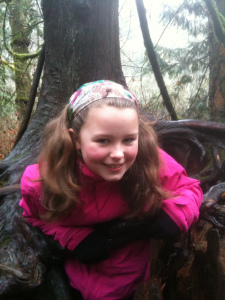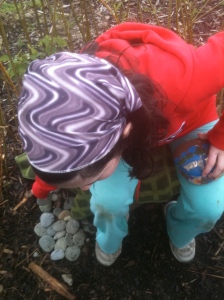Natural Escape Routes for Children
November 29, 2013
An empathy with the natural world can become a vital part of children’s psyches; they will learn to take nothing for granted, and will continually probe and ponder. They will have a sense of wonder and mystery about the world around them; it will become a vibrant part of their consciousness…In short, they will feel committed and responsible for the world in which they have been placed as caretakers for a brief moment of time (Paddy Madden, Go Wild at School).
The following is a summary of some of these research findings.
1. Nature enhances children’s skills in the following areas –
Problem Solving, Teamwork, Experimentation, Decision-Making, Adaptability, Confidence, Enhanced Communication, Sensory Development, Intellectual Stimulation (Carol Duffy, Childhood Specialist, Ireland)
2. Recent research proposes that exposure to the outdoors reduces anxiety, and enhances learning. (Dr. Dorothy Matthews, American Society for Microbiology)
3. “A den (made from natural materials) is the child’s sense of self being born, a chance to create a home away from home that becomes a manifestation of who they are. The den is the chrysalis out of which the butterfly is born.” (David Sobel, Antioch New England Graduate School)
4. “By bolstering children’s attention resources, green spaces may enable children to think more clearly and cope more effectively with life stress”. Engagement with natural settings has been linked to a child’s ability to focus, and enhances cognitive abilities. Nearby nature is a buffer for anxiety and adversity in children. (Dr Nancy Wells, Cornell University, New York)
5. The outdoor environment enhances the understanding of social relationships, language, physical movement, reasoning, curiosity, and the capacity to imagine possibilities. (Jane Williams-Siegfredsen, Viborg University College, Denmark)
6. Fostering children’s identity to include personal and social relationships with nature, improves their empathy and sense of inter-connection with the world-at-large. (Anita Barrows, Clinical Psychologist, Berkeley, California)
7. Nature can activate sensory, emotional, cognitive, symbolic and creative levels of human experience through de-familiarisation. Taken for granted everyday things, are sensitively given new meaning and enhance a child’s capacity to perceive. (Jan Van Boeckel, Research Fellow Aalto University Helsinki, Anthropologist, Filmmaker)
8. “Involuntary attention, as opposed to directed attention, can be cultivated within nature”. The “soft fascination” of the natural world can restore focussed attention required for directed studies. Involuntary attention is achieved without effort by simply observing what captures our attention. Our mind wanders and takes a rest from concentrated effort, which in turn improves learning. (Marc Berman, Brain Scientist, University of Michigan)
References
Paddy Madden, Go Wild at School
Children and Nature Network childrenandnature.org
Nature Art Education http://www.naturearteducation.org


